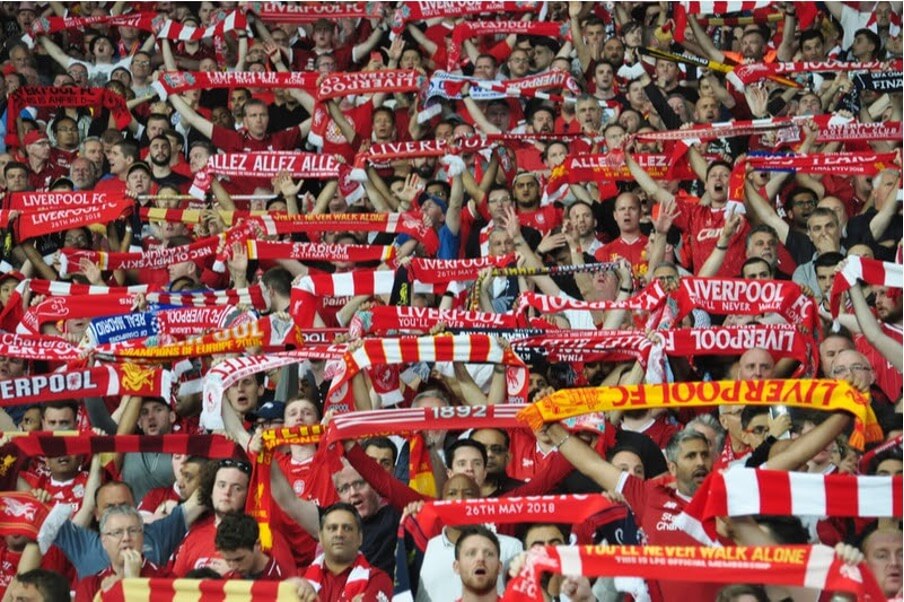Liverpool Football Club is one of the most iconic names in world football, boasting a fan base that stretches far beyond the city’s borders. From the passionate chants at Anfield to fans waving scarves in every corner of the world, Liverpool’s global appeal continues to grow — and so does the way fans experience the club.
Today, thanks to digital platforms, streaming technology, and online communities, following Liverpool is no longer restricted to local stadium-goers. This shift has been especially noticeable in countries like India, where football enthusiasm is on the rise. Indian fans now have access to Liverpool matches live, exclusive content, and even ways to engage more interactively with the sport. One example is the 4RaBet website for Indian players, where football lovers can follow match updates and engage through legal betting features. The 4Rabet Instagram page also keeps fans connected with real-time highlights, football trivia, and promotional events — making it easier for Indian fans to be part of Liverpool’s growing digital fandom.
Let’s explore how the experience of supporting Liverpool has changed, from the terraces of Anfield to the smartphone screens of millions.
The Golden Days: Football at the Heart of the Community
Liverpool FC was founded in 1892, and since then, the club has become synonymous with the city’s culture and pride. For decades, supporting Liverpool meant buying a matchday ticket, wearing your red jersey, and standing shoulder to shoulder with thousands of fellow fans, singing “You’ll Never Walk Alone.”
The 1960s to 1980s were considered a golden era for Liverpool, both in terms of domestic and European success. For local fans, going to Anfield was more than just watching football—it was a weekly ritual. Generations passed down their love for the club, and matchday became a family tradition. Radios and TV broadcasts helped spread the reach, but the heartbeat of Liverpool fandom remained in the stadium.
Satellite TV and Global Awareness
By the 1990s, satellite television began to change how fans followed the sport. Networks like Star Sports and ESPN started broadcasting Premier League matches across Asia, including India. Suddenly, Liverpool wasn’t just a name on the back pages of foreign newspapers—it was on TV screens every weekend.
Kids in Mumbai, Delhi, and Bangalore began choosing their favourite English clubs, and Liverpool was often top of the list. With iconic players like Steven Gerrard and Michael Owen captivating audiences, Liverpool’s fan base in India grew rapidly.
The Rise of the Internet Fan
The early 2000s saw a digital revolution. Forums, fan websites, and email newsletters gave rise to a new generation of supporters who engaged with Liverpool in completely new ways. No longer was it necessary to live in England or even own a TV subscription. With an internet connection, fans could follow match commentary, post opinions, and watch highlight reels from anywhere in the world.
This era also saw the rise of fan blogs and YouTube channels, which brought a new level of analysis and passion to global audiences. Liverpool’s global fan clubs—especially in countries like India, Malaysia, and Nigeria—began organizing watch parties and meetups, creating vibrant communities thousands of miles from Anfield.
Social Media and Real-Time Engagement
Social media completely transformed the fan experience. Twitter, Facebook, Instagram, and TikTok allowed fans to connect with the club, players, and fellow supporters 24/7. Liverpool’s official pages started posting training clips, behind-the-scenes content, and live match updates that made fans feel like they were part of the action.
For Indian fans, platforms like Instagram became more than just sources of content—they became hubs of interaction. Pages like the 4Rabet Instagram account took this further by curating sports-related posts, hosting giveaways, and engaging with football memes, allowing fans to be part of a vibrant, sports-focused community.
This constant flow of content made supporting Liverpool a 24/7 experience. Whether it was a transfer rumour at 2 a.m. or a Champions League goal at midnight, fans were plugged in at all times.

Streaming Services and On-Demand Fandom
Perhaps the most significant leap in fandom came with the rise of streaming services. No longer bound to cable TV packages or sports channels, fans can now stream matches live via apps on phones, tablets, or smart TVs. Platforms like Hotstar and SonyLIV have made watching Premier League games in India incredibly easy and affordable.
This change has led to:
- Massive increase in viewership across Asia
- Flexible match-viewing schedules
- Multi-language commentary options
- Access to additional football content, including documentaries and interviews
Now, a fan in Kerala or Kolkata can wake up, grab a cup of coffee, and watch Liverpool play live from their couch — with just a few taps.
Fantasy Leagues, Betting, and Interactive Viewing
Today’s sports fan wants more than just passive viewing—they want interaction. Fantasy football leagues, social betting apps, and real-time analytics have become part of the modern experience.
In India, 4RaBet has capitalized on this demand by offering a legal and safe space for football betting. Fans can bet on goals, corners, match outcomes, and player stats—all while watching the game live. It’s not just about luck; it’s about combining passion with strategy.
What’s more, sites like 4Rabet.game offer guides, score predictions, and instant payouts, making them a favourite among Indian fans who want to engage more deeply with each match. With mobile-first designs and native-language support, platforms like 4Rabet are shaping the way Liverpool fans interact with football.
Virtual Stadiums and the Metaverse?
Looking ahead, the next evolution of sports fandom might lie in virtual and augmented reality. Companies are exploring ways to bring stadium experiences to your living room, complete with 360-degree views, AR stats overlays, and even virtual crowd noise.
For Liverpool fans, this could mean watching a match with virtual friends from around the world, all while sitting in a digitally recreated Anfield. It’s an exciting future where borders and geography become irrelevant.
Conclusion: The Heart of Liverpool Fandom Still Beats Strong
Despite all the changes, the essence of being a Liverpool supporter remains unchanged: pride, loyalty, and passion. Whether you’re standing on the Kop or streaming a match from your phone in Hyderabad, the emotional highs and lows are the same.
The evolution of Liverpool fandom shows how technology, accessibility, and community have come together to make football more inclusive and interactive than ever. With platforms like 4Rabet offering new ways to connect and engage, and with the global fan base growing each year, it’s clear that Liverpool’s legacy is not just intact—it’s thriving.
“You’ll Never Walk Alone” has never felt more global, more connected, or more alive.




